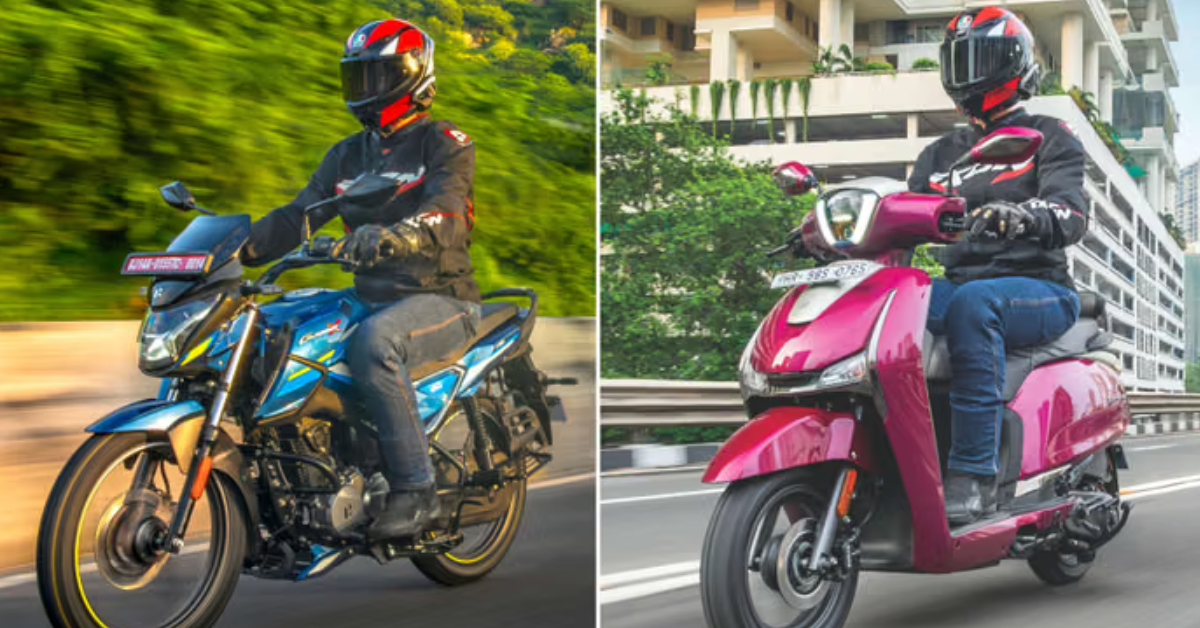India’s two-wheeler market has always been highly price-sensitive, and any fluctuation in taxation or government policies has a direct impact on sales. The latest announcement regarding revised GST rates under GST 2.0 has created a wave of excitement among two-wheeler buyers. Hero MotoCorp, the country’s largest two-wheeler manufacturer, has responded immediately by slashing bike prices by up to ₹15,743 across different models.
This move not only makes Hero bikes more affordable but also strengthens the brand’s position as a value-for-money leader in the Indian two-wheeler market. Let’s dive into the details of this price reduction, which models benefit the most, and what it means for the future of the two-wheeler industry.
Why the Price Drop Happened: The Role of GST 2.0
The Government of India recently implemented GST 2.0 reforms, revising tax slabs on automobiles to encourage sales and boost the auto sector. The two-wheeler segment, which is vital to rural as well as urban mobility, witnessed a reduction in tax rates.
Hero MotoCorp, being the market leader with models ranging from entry-level commuters to premium motorcycles, immediately passed on the benefits to customers. This price reduction is a strategic move aimed at increasing sales volume, attracting first-time buyers, and providing relief to middle-class and rural customers who form the backbone of its customer base.
How Much Are Prices Reduced?
Depending on the model, the price cut ranges up to ₹15,743. Entry-level commuters get modest reductions, while mid-range and premium models benefit the most. Here’s an overview of how different categories are impacted:
- Entry-Level Commuters (Splendor, HF Deluxe, Passion Plus):
- Price cut: ₹3,000–₹5,000
- These models already dominate sales in rural and small-town markets. The price cut makes them even more attractive for budget-conscious buyers.
- Mid-Range Bikes (Glamour, Super Splendor, Xtreme 125R, Xpulse 200):
- Price cut: ₹6,000–₹10,000
- These bikes are popular among urban commuters and young riders. Lower prices add to their appeal, especially against rivals like Bajaj Pulsar and Honda Shine.
- Premium Models (Karizma XMR, Xtreme 160R, Xpulse 200 4V):
- Price cut: Up to ₹15,743
- Hero’s push in the premium segment gets a strong boost. Customers who were holding back due to higher costs may now reconsider.
Popular Models and Their New Prices
While official revised ex-showroom prices vary by state, here are some indicative reductions across popular Hero models:
- Hero Splendor Plus: One of India’s best-selling bikes, now cheaper by around ₹4,000.
- Hero HF Deluxe: Affordable entry-level bike sees a cut of approx. ₹3,500.
- Hero Glamour: Mid-range commuter receives a drop of nearly ₹7,500.
- Hero Xtreme 160R: Premium commuter now cheaper by up to ₹12,000.
- Hero Karizma XMR: Flagship model benefits most, with a reduction of nearly ₹15,743.
These revised prices not only enhance affordability but also give Hero an edge over competitors like Honda, TVS, and Bajaj.
Customer Impact: Why This Matters
For Indian customers, affordability is a deciding factor when purchasing a two-wheeler. With fuel prices remaining high, reducing upfront costs is a big relief. The GST-driven price cut makes it easier for families, students, and working professionals to consider upgrading or buying their first motorcycle.
Some key impacts include:
- Increased sales during festive seasons as affordability improves.
- Boost to rural demand, where two-wheelers are a primary mode of transport.
- Encouragement for young buyers, who may now opt for premium models due to reduced prices.
- Positive resale value for Hero bikes, as stronger sales volumes increase market confidence.
Market Competition Heats Up
Hero’s bold move to pass on GST benefits directly to consumers is likely to pressure other manufacturers. Bajaj Auto, Honda Motorcycle & Scooter India (HMSI), and TVS Motor may follow suit to remain competitive.
- Bajaj Pulsar series could see price adjustments to match Hero’s mid-range offerings.
- Honda Shine and Unicorn, popular commuter bikes, may face stiff competition as Hero Glamour and Super Splendor become more attractive.
- TVS Apache series, positioned against Hero Xtreme 160R, may need aggressive pricing or feature updates.
This competitive wave ultimately benefits customers, who now have more affordable options across brands.
Hero’s Strategy Behind the Price Cuts
Hero MotoCorp has always maintained leadership in the commuter bike segment, and with this price cut, it is reinforcing its dominance. The strategy includes:
- Boosting sales volumes in entry-level bikes to capture first-time buyers.
- Strengthening urban presence with mid-range models.
- Expanding premium market share by making high-performance bikes more accessible.
- Enhancing rural mobility, where affordability is crucial.
By passing on the benefits of GST 2.0 directly, Hero has positioned itself as a customer-first brand, which further strengthens its brand loyalty.
Long-Term Implications
This price cut is more than just a short-term sales strategy. It has deeper implications:
- Industry-wide impact: Other brands may follow, reshaping the two-wheeler pricing landscape.
- Sustainability in sales growth: With affordability improved, sales momentum could carry into FY 2026.
- Policy alignment: By quickly responding to GST reforms, Hero aligns itself with government initiatives to make mobility affordable.
- Consumer trust: Passing on tax benefits directly builds goodwill among customers.
Expert Opinions
Industry analysts suggest that the move could increase Hero’s market share by 2–3% in the next fiscal year. Dealers also expect higher footfall in showrooms, especially in semi-urban and rural areas.
Financial experts note that while the per-unit revenue decreases due to lower prices, the volume-driven approach could result in overall profitability. Hero’s established supply chain and wide dealer network give it an advantage in handling increased demand.
Conclusion
The price drop of up to ₹15,743 on Hero bikes, driven by the new GST 2.0 reforms, is a game-changer for India’s two-wheeler market. It makes Hero motorcycles more affordable, boosts customer sentiment, and strengthens Hero MotoCorp’s leadership in the industry.
With models across all segments—from entry-level commuters to premium performance bikes—benefiting from the cuts, Hero has successfully created a buzz among buyers. As competition heats up, customers stand to gain the most from this pricing revolution.
For riders looking to buy a new bike, there has never been a better time. Hero MotoCorp has ensured that the dream of owning a reliable, stylish, and fuel-efficient motorcycle is now within closer reach than ever before.

